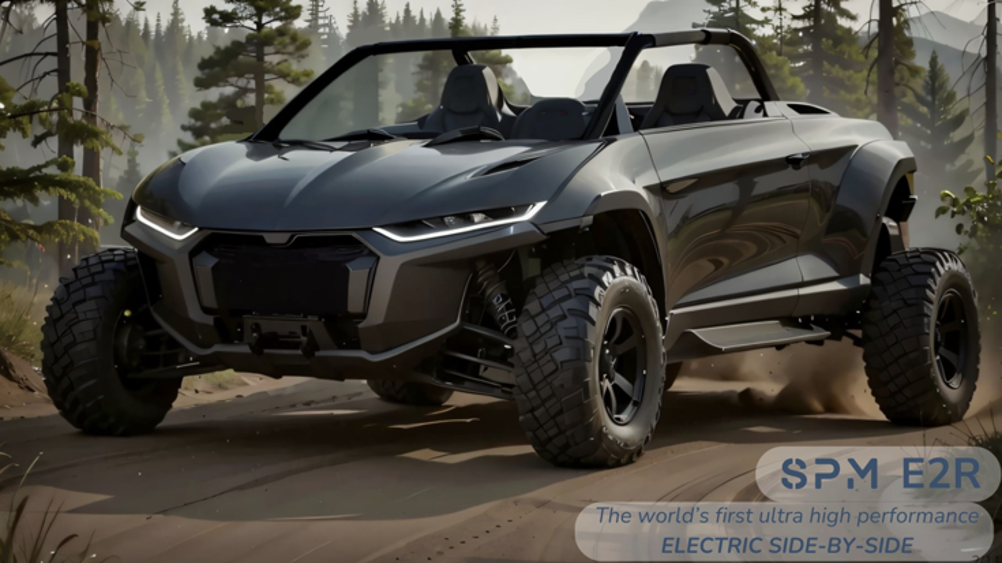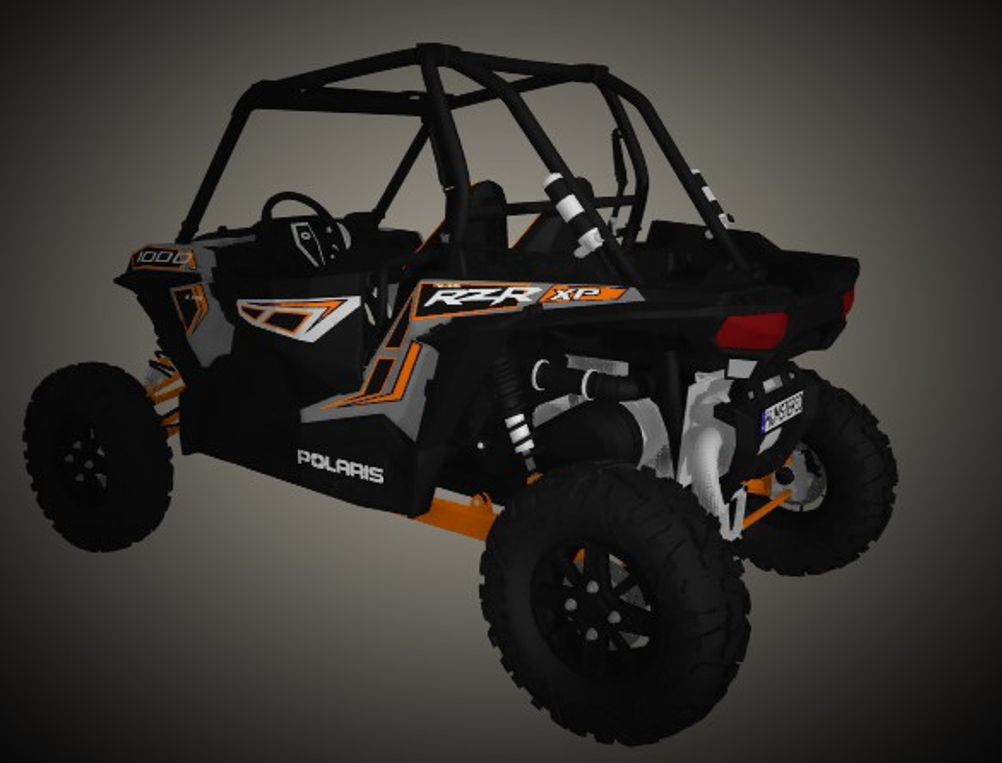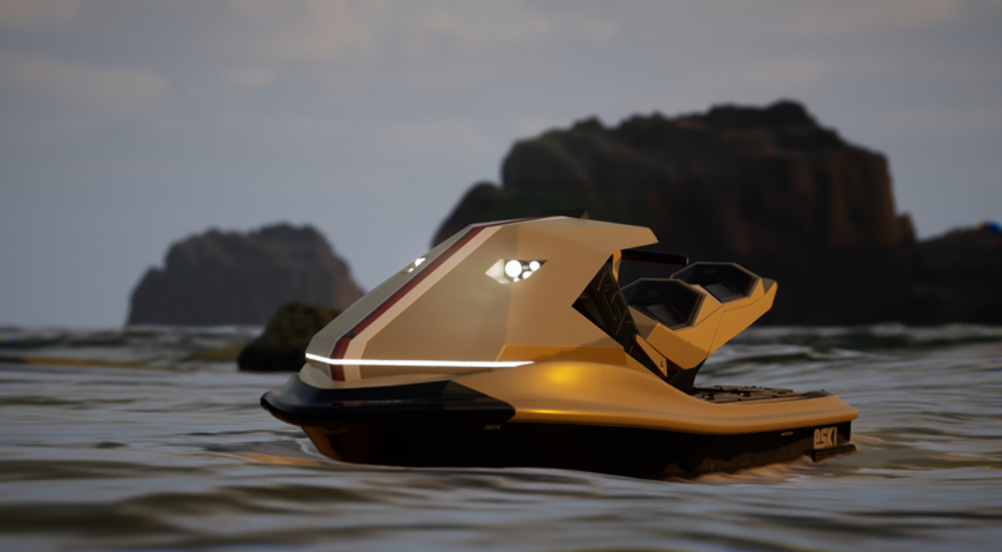Dassault Systèmes’ 3DEXPERINCE World 2024 (February 11 – 14, 2024), hosted in Dallas, Texas, showcased not only the latest technology updates to its SolidWorks software, as well as the company’s leaders delving into topics such as generative AI and sustainable developments, but also a wide array of companies and inventions designed and refined on the platform.
A clear frontrunner in the industries supported by Dassault and SolidWorks is the automotive sector, and every automotive and mobility company present at the convention was in agreement on the key area of focus currently: electrification.
The Engineer heard from three companies – though focused on entirely different modes of transport and indeed on entirely different terrains – that are all committed to this electrification transition: E-Muscle Cars, Super Powers Mobility, and eSki.
These organisations, all fairly new startups, hope to demonstrate that electrification is not just for the road, nor just for standard automotive vehicles.
E-Muscle Cars (EMC), founded in 2021 by Bill Schofield and Kevin Emr, took inspiration from the fast-paced changes in electric motor and battery technology that we are seeing in our everyday cars, to apply similar electrification to muscle cars.
The company is developing chassis-specific EV conversions, currently for what it deems the three most popular muscle cars ever made: the first-generation Camaro, first-generation Mustang, and first-generation Corvette.
Schofield and Emr said their mission is to maintain the integrity and beauty of these original vehicles, but give them all of the benefits that come with electrification.
“Our mission’s primary goal wasn’t necessarily emissions reduction, but more for convenience and ease of ownership, to prolong the lives of these older vehicles, as well as expanding classic car ownership,” said Emr, at a ‘Sustainability, Innovation, Transportation’ talk hosted by 3DEXPERIENCE World.
EMC said it is aiming to make these classic cars ‘future proof’ by removing the car’s original internal combustion engine (ICE) and replacing it with reliable electric motors and a range of batteries.
“We present battery solutions for each chassis, and then fine tune that to the customer’s needs. We have some batteries with fast discharge rates for the motorsport purchasers, and others with extremely high storage rates for transportation and road trip users,” said Emr.
“Our converted vehicles can do very short trips, to well over 400 miles. Our cars are much smaller and lighter than today’s average EVs, so we do get a better range out of a standard battery.”
Further, EMC said that conversions of various platforms can allow for different power levels, and that all initial builds will exceed original horsepower and torque levels. Additional power options are said to be ‘possible’ for those seeking a faster classic motor, depending on budget and geometry of the vehicle.
Whilst the body of the classic muscle car stays the same, with “no LED buttons, no modern digital dashes, no engine control panels installed where the gear-shift used to be,” the roar of the original car has been replaced by the hum of an electric engine.
“One of the first questions we get is, ‘what about the noise?’, but that’s the last question people ask once they’ve taken the car for a ride. The uniqueness of the car making no noise, despite the classic look, is what really grabs people’s attention,” said Emr.
Ultimately, the company hopes that classic car lovers will be drawn to both the ease of ownership – the electrification removing the ‘constant’ need for maintenance on these old engines – and the environmental benefits alike.
Considering EMC’s motivation, Emr concluded, “Some of the OEMs have been working on EVs since the 80s and 90s, so we have a lot of information and history to fall back on, but if we don’t do our best to develop the safest, most developed vehicles to our consumers and to direct the industry, then innovation and sustainability will falter.”

Delving further into the niche of automotive sustainability, Super Powers Mobility (SPM), founded in September 2023 and the most recent company supported by SolidWorks’ start-up programme, has begun an electrification of off-road vehicles.
The company is aiming to blaze the trail for an electrified off-road future by creating products that facilitate this, whether the use-case be ‘recreational, for the operation of a business, or in the assistance of bigger organisations like the military and police.’
When asked about his vision for SPM, founder and CEO Jonathan Powers said: “Our products are meant to open the floodgates to electric drivetrain innovation in an industry that has historically been powered by fossil fuels. With objective benefits to the power generation characteristics of high voltage electric motors, and with the recent advances in energy density of lithium-ion batteries, electrifying the off-road industry arguably makes as much, if not more sense than the mass adoption of electric road cars.
“We are focusing on powersports products which include vehicles like motorcycles, snowmobiles, ATVs, and side-by-sides. These classes of vehicles are much smaller and simpler than automotives and thus give startups a higher probability of successfully producing them at larger volumes faster, without the need for as much capital up front.”
SPM is initially developing an EV conversion kit for utility task vehicles (UTVs), specifically side-by-sides, which are large all-terrain vehicles with two or four seats side-by-side and the largest growing powersports vehicle by market size and growth rate. The first version, currently under development, will be for a Polaris off-road vehicle specifically.
The conversion kit will be ‘simple,’ with the aim for mechanics and purchasers themselves to be able to convert their own vehicles, designed to be a 20kWh battery ‘drop-in’ conversion.
Further, SPM are aiming to be the first to develop a fully electric, ultra-high performance side-by-side: the ER2. The company hope that it will be able to outperform its current top of the market competitors, like the Polaris Rzr Pro R, in acceleration, speed and handling.
SPM said that the ‘do-it-yourself’ off-road scene has been retrofitting their side-by-sides with Tesla drive units, for instance, for years, which creates a fast EV but with reduced handling and often sub-50 mile range.
The ER2 will have an SPM developed, fully-integrated powertrain system used in both the front and rear axles of the vehicle, and a quad motor and dual motor layout. The company estimate that their drive unit will have a range of at least 100 miles.
SPM said that the ER2’s battery, developed in-house, will be compatible with the Tesla NACS chargeport, so that owners can ‘pull up to a supercharger and fully charge their vehicle in just 15 minutes.’

As with EMC’s electric muscle car, SPM’s innovations aim to quieten the off-road industry, often recieving a similar reception from traditional off-road enthusiasts: “Current owners say that they’ll miss the sound of their vehicles, but I can say with certainty that the tranquil silence of blasting through trails under electric power is even more satisfying than hearing your combustion motor, you become much more in tune with nature,” said Powers, who has raced powersport vehicles himself since the age of five, settling on side-by-sides at the age of 18.
SPM will be launching a pre-order campaign for its ground-up side-by-side vehicle, as well as developing its conversion kit for existing vehicles. Looking ahead, the company also aims to tackle the issue of high voltage energy storage, so that off-roaders can fast-charge their vehicles out on the trails.
“By building electrified products, we are offering a highly differentiated alternative with valuable unique selling points to make customers’ lives easier,” said Powers.
“These selling points include near silence on the trails, reduced maintenance, improved powertrain reliability, the ability to operate fully submerged, and of course reduction of our dependency on fossil fuels and plastic products.”
But, if we are to reach a net zero world, climate conscious mobility has to extend beyond just four wheels and roads or dirt tracks.
Jack Duffy-Protentis, who founded his business eSki in September 2021 right after graduating from Worcester Polytechnic Institute, wanted to expand electrification from just the automotive industry, as he set out to bring an electric jet ski to market.
Unveiled last year, the company’s first fully-developed product, the Trident ES1, offers riders the same thrill as a normal jet ski, but without the pollution; indeed, a fuelled jet ski is said to emit approximately 113kg of carbon dioxide, as well as 110 decibels of noise pollution, per hour.
Instead, eSki’s peak 230hp electric powered personal watercraft (PWC) emits no pollution, but still reaches an estimated current top speed of 65mph.
“For us as well, a major aspect is longevity. EVs inherently last longer per life cycle which ends up reducing waste. We have a hot swapping battery system which allows for reduction of waste, more recyclability and a greater longevity of materials,” said Duffy-Protentis.
The eSki can hold 20kWh batteries with a run time of up to one and a half hours, only extended by the patented hot swapping battery system, which allows for the jet ski to return to the dock for just minutes before running again on a new battery. The reserve batteries can then be fully charged in just 45 minutes.
“We are also trying to set-up a battery licencing leasing programme that will allow for the infrastructure of current watercraft to be adapted for EV, rather than adding to the ‘refuelling’ congestion in marinas already.”

Duffy-Protentis has specifically identified a gap in the rental jet ski market, with the hope that businesses will buy into the more sustainable option, and will see the maintenance and economic benefits, too, given that the estimated operational cost of an electric jet ski is $4.75 per hour of use compared to the traditional $40 per hour.
“For me, the main factor is cleaning up the environment,” said the eSki CEO. “As someone who grew up in New England, I can see that the seasons are changing drastically from when I was younger. I want to do my part in helping to correct the environmental damage that has been done before it’s too late.
“I love having fun, but it should never be at the cost of the next generation.”
Each of these companies are disrupting their respective industries with a similar goal in mind, to demonstrate that electrification benefits the environment and the customers alike, with ease of ownership and longevity for the user a key priority.
If we are to reach a net zero world, even those on the ‘edge’ of every industry need to commit to a climate conscious vision. Certainly, these three companies are focusing their respective industries on sustainability, showing that whether it be on the water, roads or in mud, electrification is the future.











McMurtry Spéirling defies gravity using fan downforce
Ground effect fans were banned from competitive motorsport from the end of the 1978 season following the introduction of Gordon Murray's Brabham...